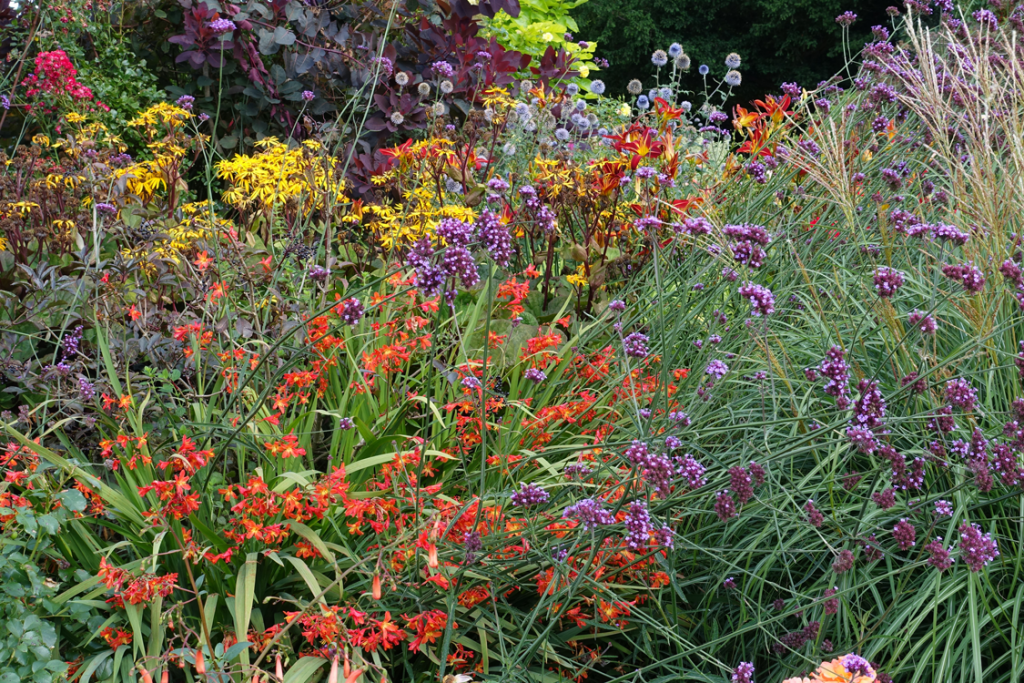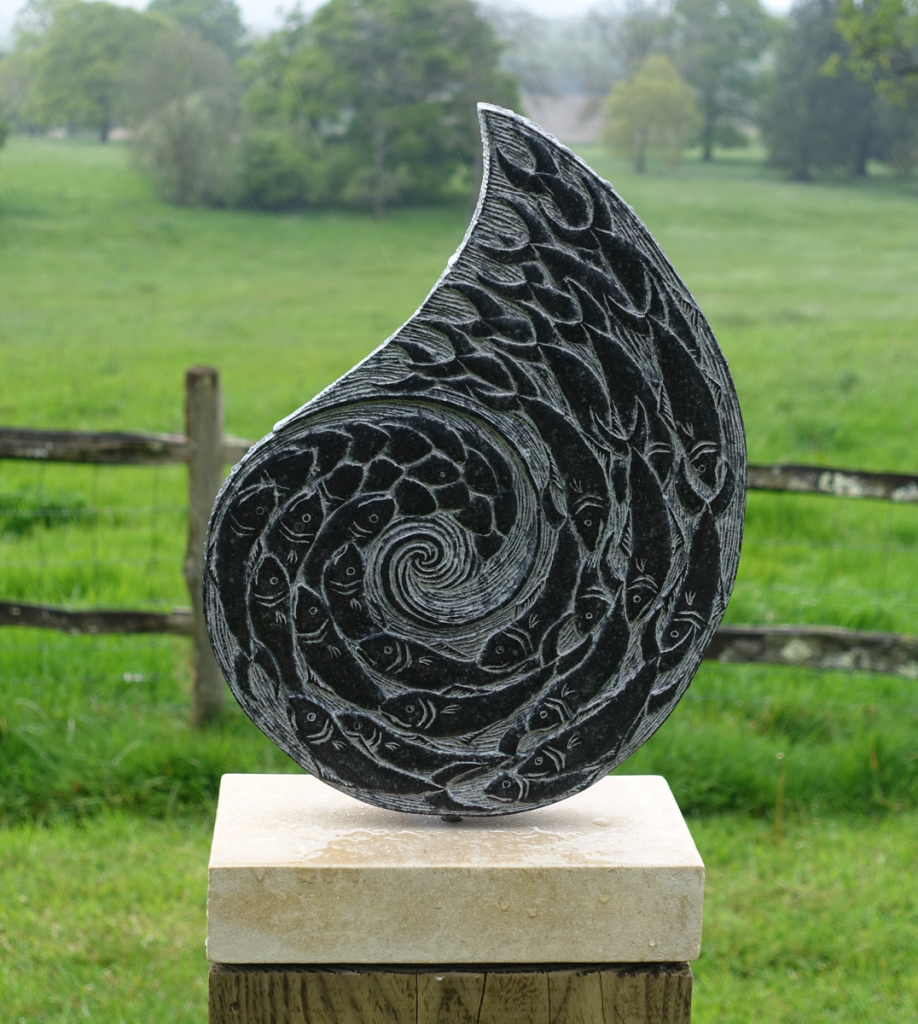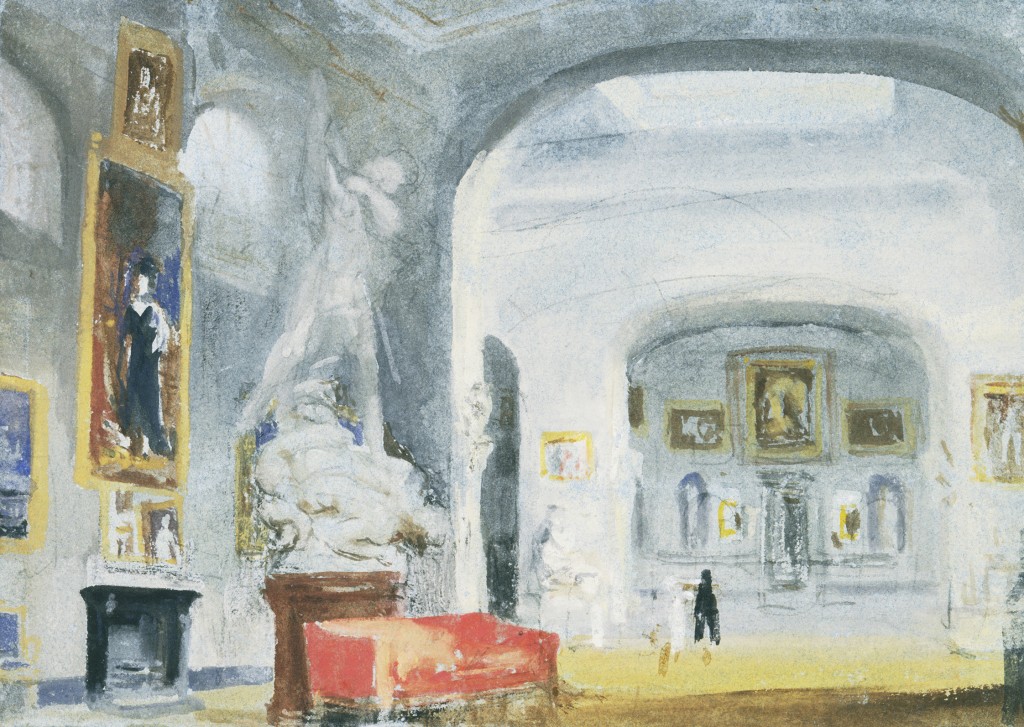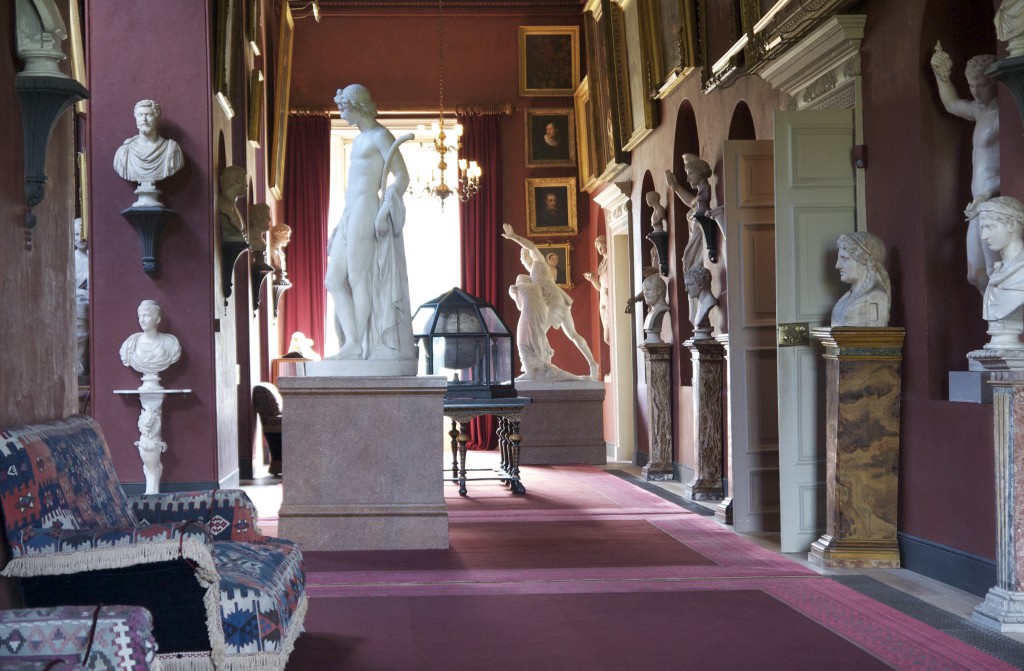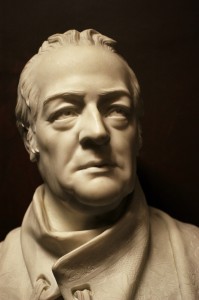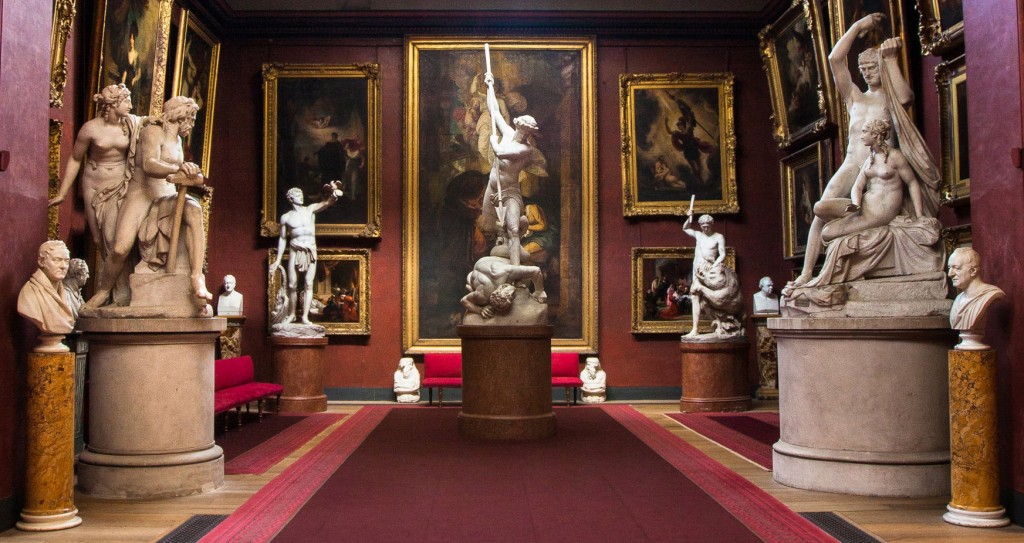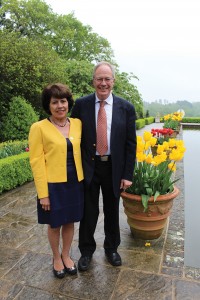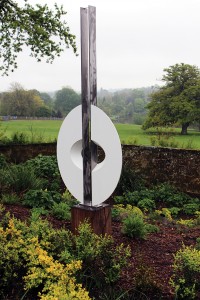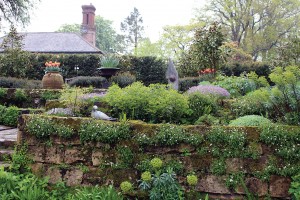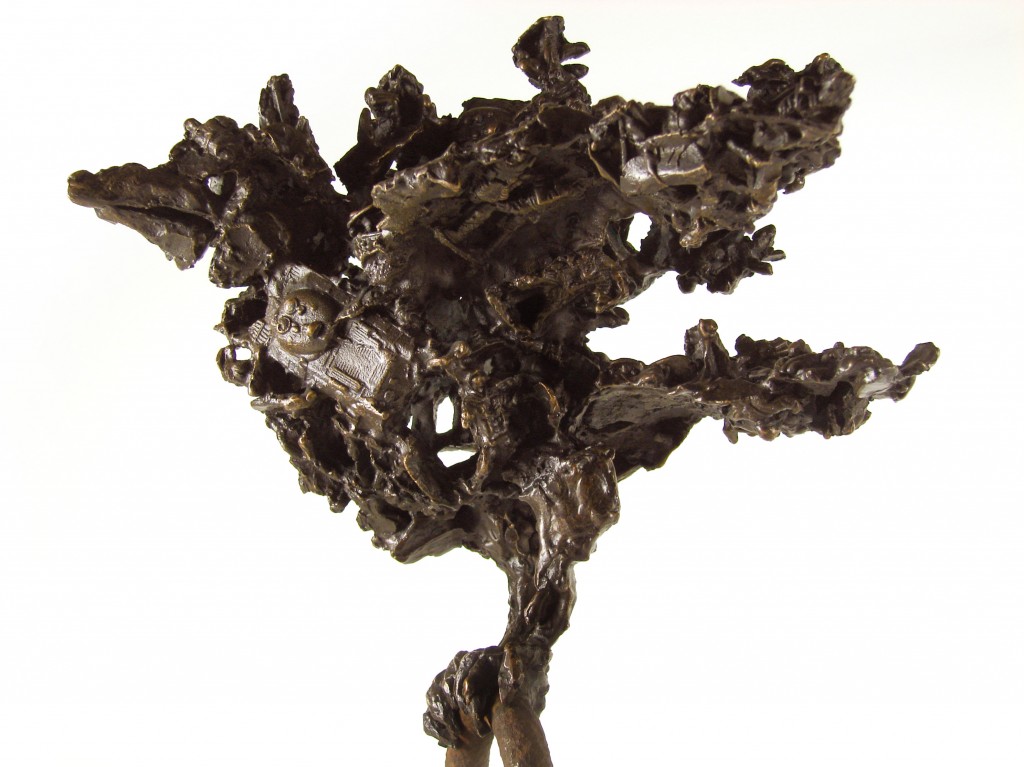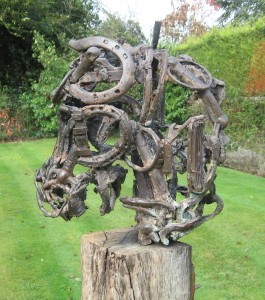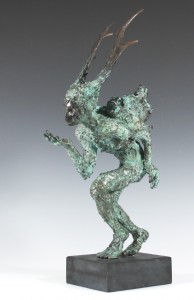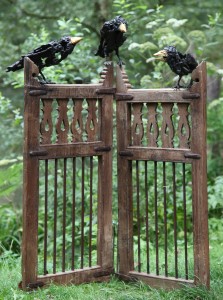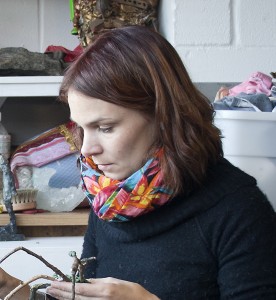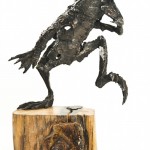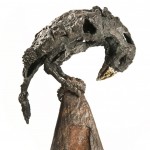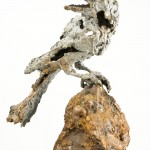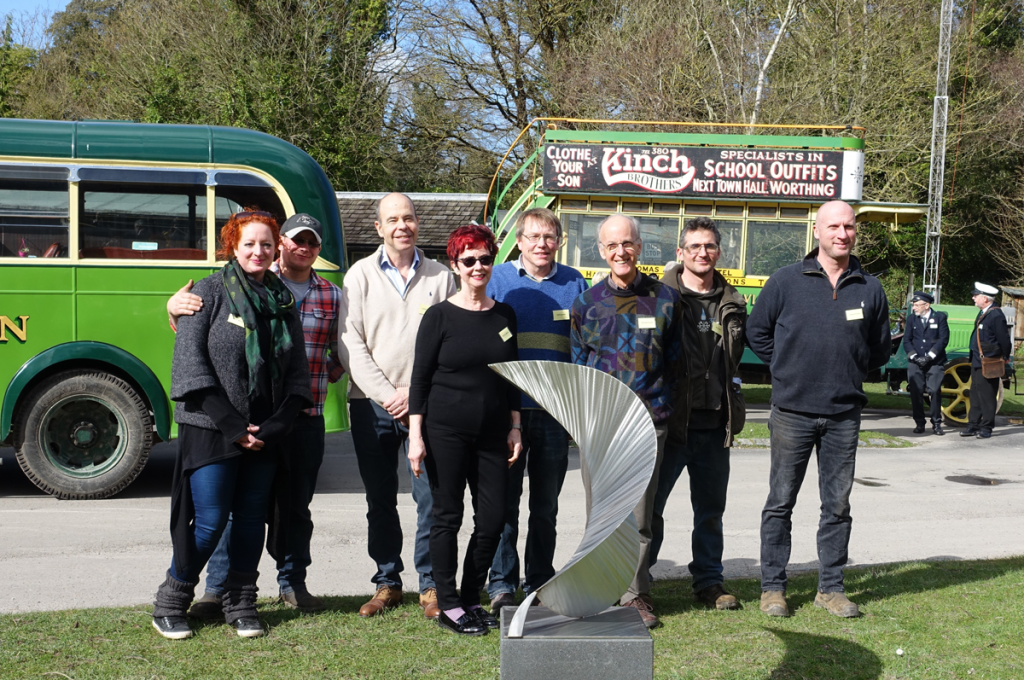
The first flash of spring sunshine broke through as Amberley Museum launched its inaugural Sculpture Trail. The Sculpture Trail provides a natural bridge between the artist and artisan. Many of the traditional crafts and skills preserved and maintained at the museum are employed in creating sculpture.
20th century Britain witnessed a great revival in the Renaissance idea of the artisan artist. In Sussex artists like Paul Nash, Eric Ravilious, Edward Bawden and others worked as designers and woodblock illustrators as well as painters of fine art.
As we walk up through the museum we reach a fork in the path and nestling amongst the dappled light of the still bare Silver Birch we discover a stone form titled ‘Cell’. The artist Will Spankie explains “The sculpture is inspired by bees. I love bees – the way that they live.” Will and his wife Lucy keep bees. The textural cells carved in Purbeck stone reflect the mass of prismatic wax cells built by honey bees in their nests to hold their stores of honey, pollen and as nurseries for their brood larvae. The changing light plays on the contrasting textured and smooth surfaces of the worked stone creating an impression of stillness and movement.
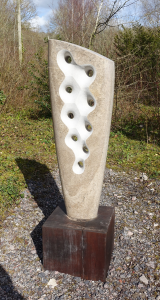
We walk with the sculptor Michael Joseph and his wife Jane down a wooded path as they talk passionately about wild flower meadows and bees. We round a corner and find Michael Joseph’s sculpture ‘Serene’ bathed in sunshine. Its bold figurative outline is repeated by its shadow against a crisp white wall. Michael loves the technical challenges of making his sculptures. I ask him about the creative process of this piece. He says “I made a maquette by bending the metal, but this larger finished work is made from tubing which can’t be bent without distorting it. So I made a number of cuts through to the outer face to very high mathematical tolerances then I welded it. It’s dressed and patinated with powder coating.”
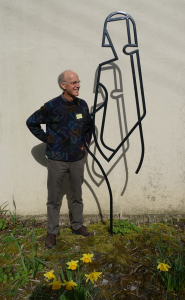
Works by the blacksmith partnership of Sarah Blunden and Ben Fraser, as well as blacksmith Alex Smith give real voice to calling and vocation in creativity expressed by the artisan artist – for them there is no peace without making. The inspiration of nature and its rhythms is beautifully articulated by the sculptor Simon Probyn. His steel abstract ‘Pebbles’ greets you as you arrive. And then there is the architect sculptor Lester Korzilius’ mixed method ‘Vortex’ with its bold palette and abstract form which plays with light and its enviroment.
I often return to the Amberley Museum for its brilliant railway, vintage car, and craft weekends as well as to ride on its fantastic vintage buses and trains. The sculptures are an exciting addition to this industrial landscape allowing us to see the familiar anew.
Amberley Museum’s 2020 Sculpture Trail runs until the 28th June 2020 and there is a celebration of James Bond on the weekend of the 28th March. For more information visit www.amberleymuseum.co.uk or telephone 01798 831370.
